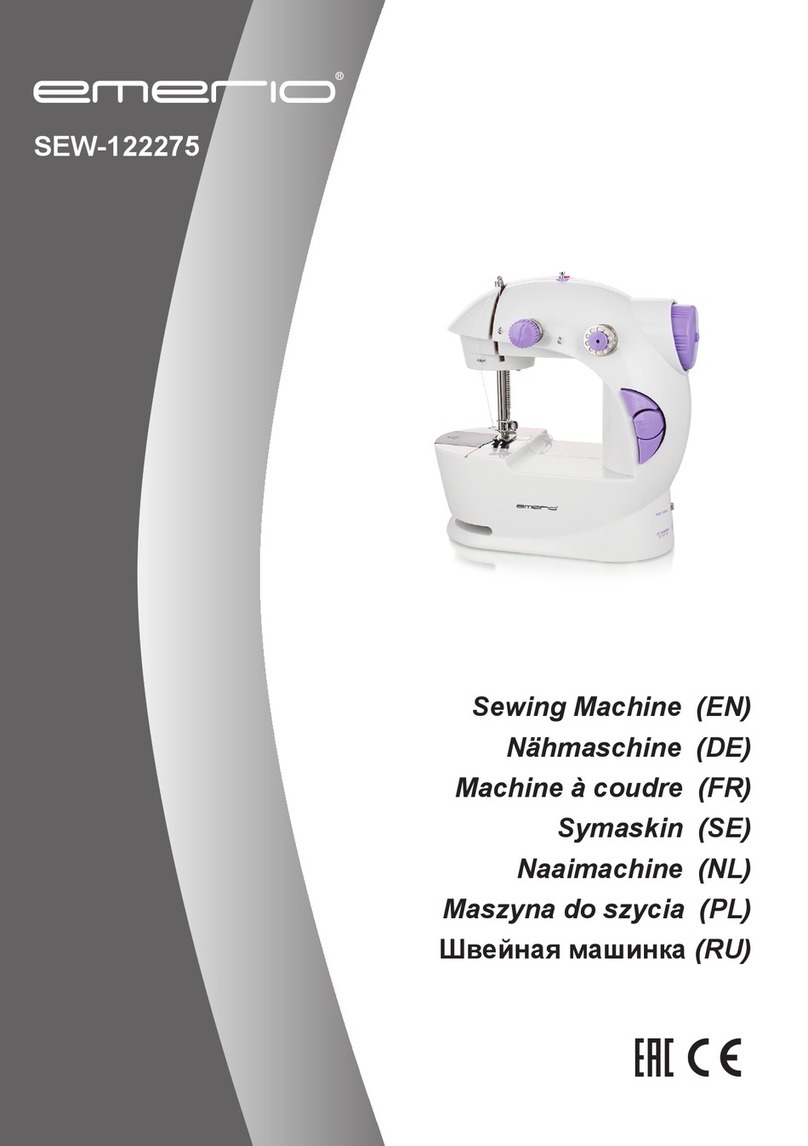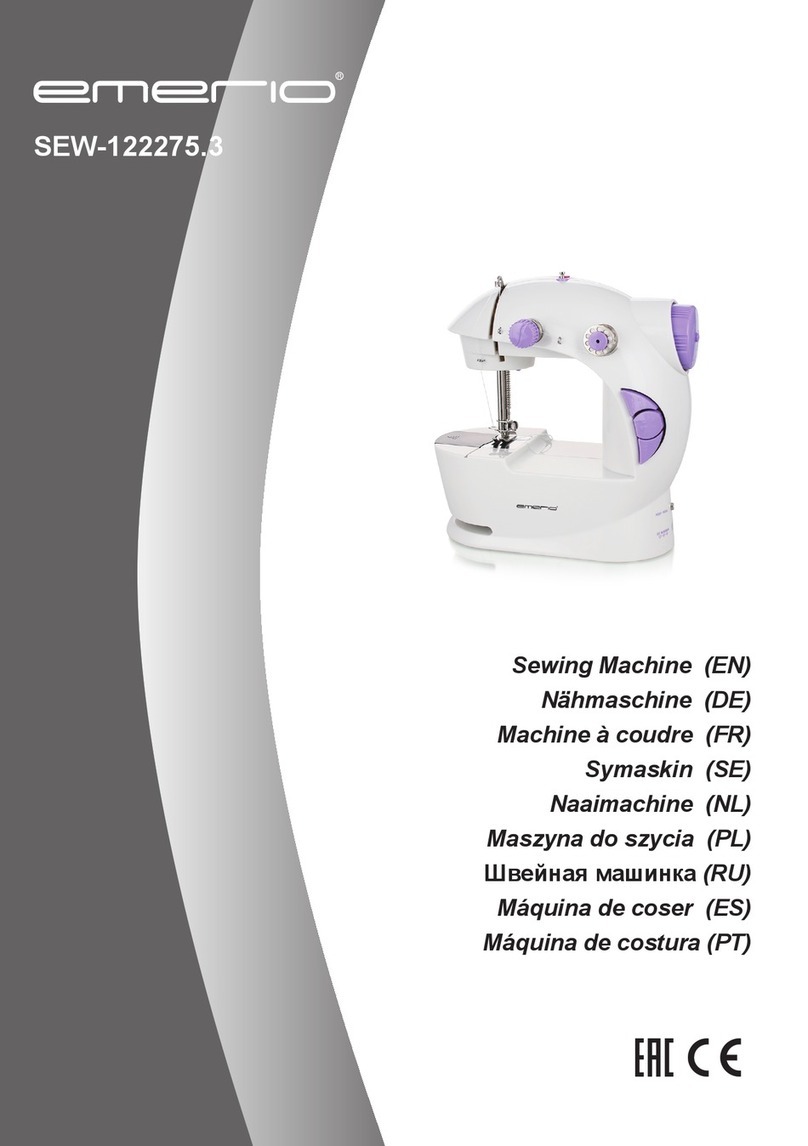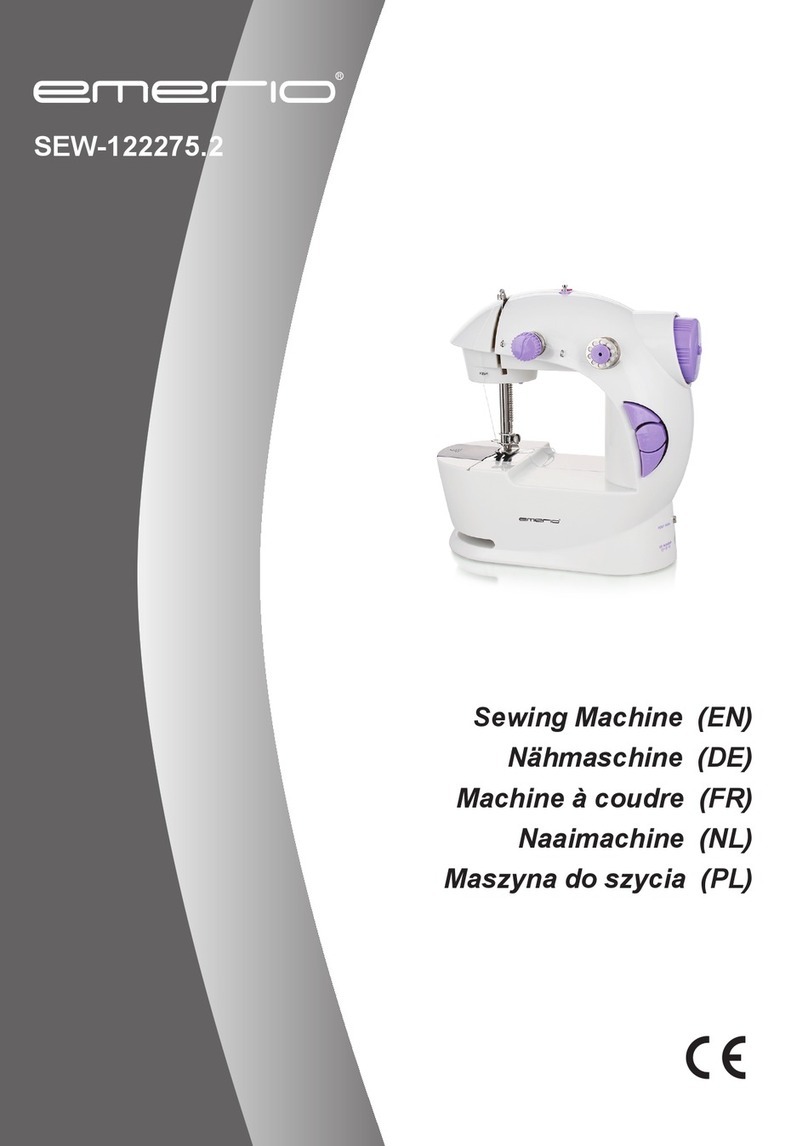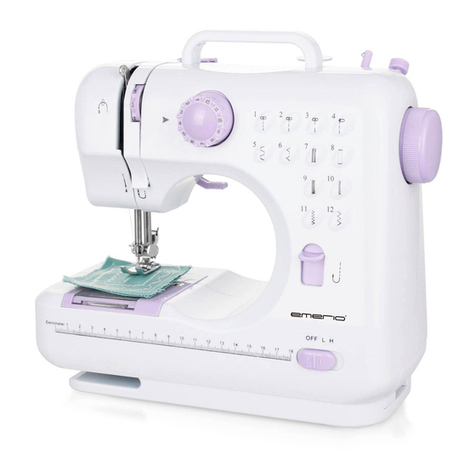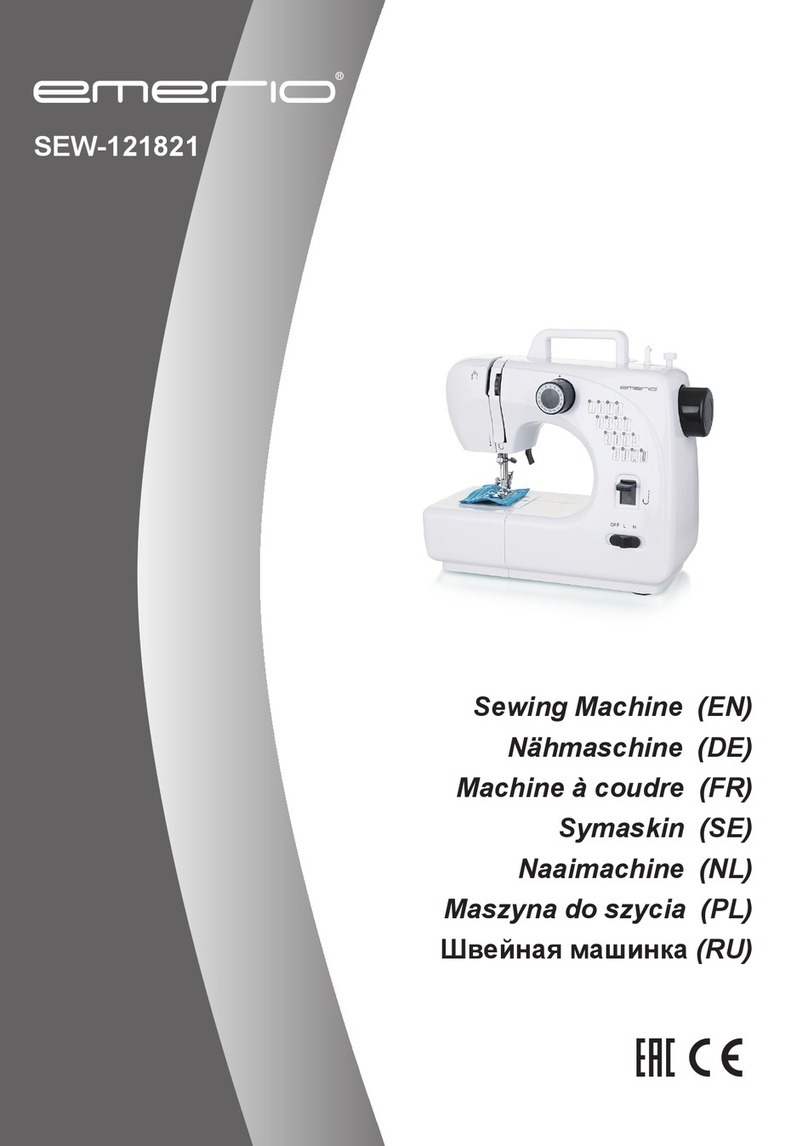
- 5 -
Caution: Make sure the plug is disconnected from mains power supply when you are not using it, so the
sewing machine won’t accidentally start up.
Note: The machine works only when its power switch stays at the position “ON” and simultaneously the
connected foot pedal is pressed.
NEEDLE REPLACEMENT
If the needle breaks, or you need a different needle to sew a different kind of fabric, just follow these steps:
Caution: To prevent injury from accidentally starting up the machine, make sure to turn off the switch, remove
the foot pedal and the adapter plug first.
1. Turn the hand wheel to raise the needle to its highest position. Hold the old needle and loosen the needle
clamp screw. Remove the old needle and discard it properly. (Fig.1)
2. Insert the new needle into the clamp with the flat side toward the correct direction (to the back). Be sure
to push the needle completely into the clamp before tightening the needle clamp screw. Tighten the
needle clamp screw. (Fig.2)
Caution: Needle direction must be correct, and be sure to tighten the thimble screw, to avoid needle falling by
accident.
Fig.1 Fig.2
PRESSER FOOT REPLACEMENT
1. Removing the presser foot
Turn the hand wheel counterclockwise to raise the needle to its highest position. Raise the presser foot lifter,
and press the presser foot locking lever. The presser foot will drop off automatically from the locking device.
(Fig.3)
2. Installing the presser foot
Put the presser foot under the presser foot locking device, lower the presser foot lifter, press the presser foot
locking device to reset the foot, and lift the presser foot lifter. (Fig.4)
Caution:
Always switch off the appliance and disconnect it from the power supply when replacing the presser foot.
When replacing the presser foot, please place the machine on a stable platform.
When putting down the presser foot, please do not put your hand or finger under it to avoid injuring
fingers.
Fig.3 Fig.4
